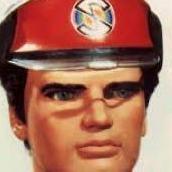Opening clock mainspring barrel
-
Recently Browsing
- No registered users viewing this page.
-
Topics
-
Posts
-
Thinking of best fit did we ever look at fingerprinting this movement? Then identification of watches? This actually comes up a lot on this group of people especially with older watches thinking they're going to identify some vintage no name whatever and know they're not going to. But even more important books like bestfit only exist to supply spare parts. This means the movement had to have been made in sufficient quantities and exported out of Japan for a company like bestfit to supply spare parts. So simplistic rule would be unless parts were readily available cross reference books to identify it for finding parts will not exist. One of things I was curious about I went back to the first page and part of the problem is your watches so much older than the one that launched this discussion if you look at the original posting picture it's a screwless balance with a shock protected system yours is much much older. Then of course older also brings up the problem of parts identification books because they were really only made in specific time spans and do not cover an infinite quantity of years unfortunately although bestfit Did have some older books but if I remember right I don't think Seiko shows up even until basically the last of their books because it comes back to they weren't exported out of Japan insufficient quantities for anyone to care about spare parts unfortunately
-
I'm working on a 602 that has date. Well the bridge has Cal 602 on it. That was a complete pig. I ended up laying mine in place and hoping for the best! I didn't want to hav e you keep going over those darn pivots - painful. Well it all seems to have worked so....... perhaps I was lucky? And thanks so much for that photo. After disassembling I found my footage completely out of ficus. Lesson to myself (and anyone else) don't use a GoPro less than 30cm (at which distance the watch is in the distance anyway).
-
Job done. After a lot of fiddling and testing I used this method . I purchased the correct size glass from eBay. To drill the hole I used a diamond core drill bit . I have a small pillar drill press and submerged the glass in water inside of a jar lid with a cork mat underneath the glass. I drilled very slowly and it was successful but it did chip a bit but it’s not visible. A very happy customer..
-
I've not bought a replacement mainspring before. According to my digital calipers the broken spring in my Lancashire Watch Co. Pocket Watch is 2.4mm wide & 2.0mm thick & the barrel is 16mm diameter. The nearest Cousins has to this (GR6573) only differs in the barrel width - it's 15.5mm . Is this difference significant? Also, the old spring has a pin across the outer end to secure it in the barrel but the Cousins info implies it's "a normal bridle" (whatever that means) rather than a "T" (which I assume is how my old spring is categorised). Help, please!
-
Another option is to an old piece of clock mainspring, if you have some thick enough.
-





Recommended Posts
Join the conversation
You can post now and register later. If you have an account, sign in now to post with your account.
Note: Your post will require moderator approval before it will be visible.